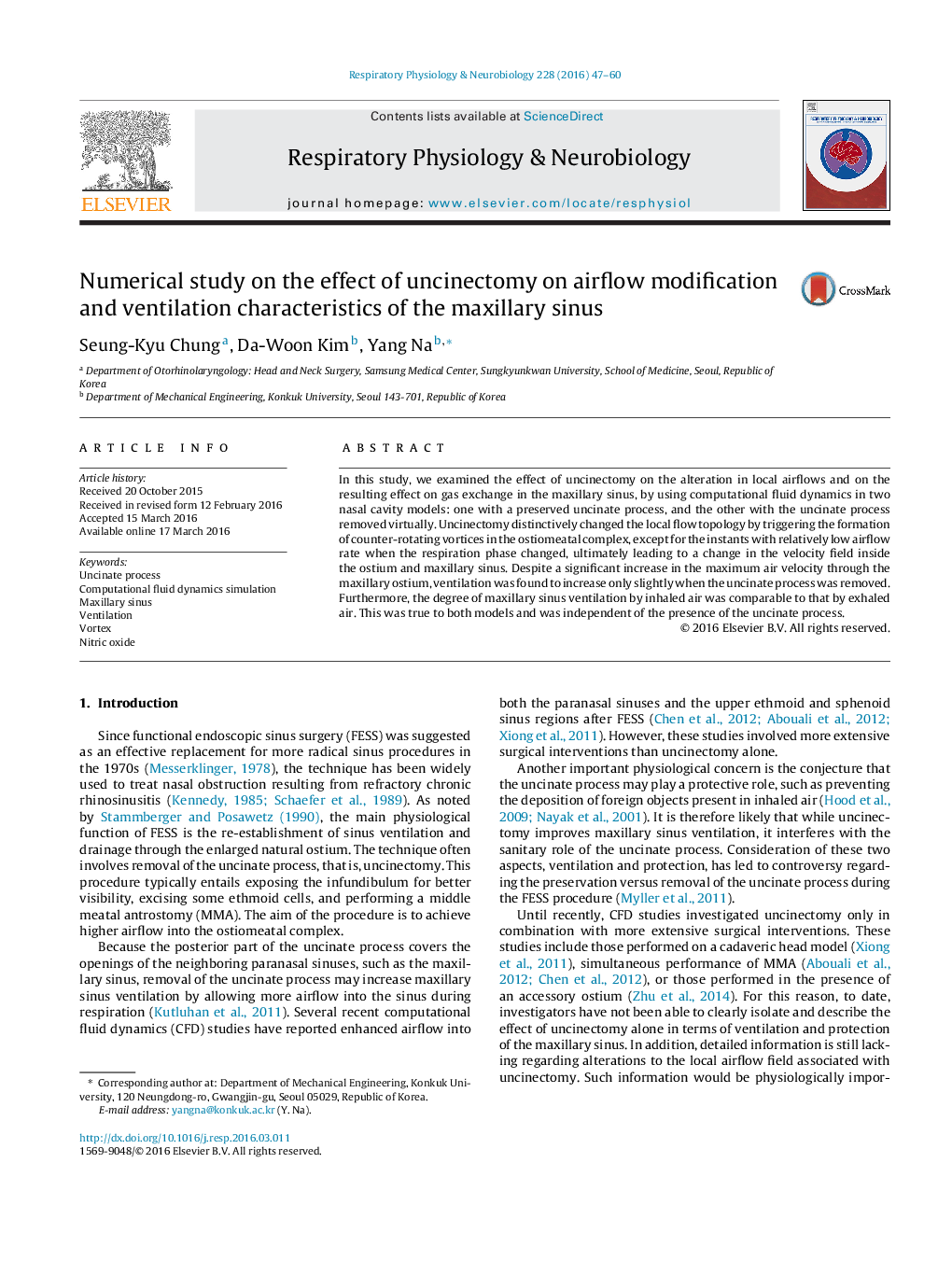| Article ID | Journal | Published Year | Pages | File Type |
|---|---|---|---|---|
| 2846740 | Respiratory Physiology & Neurobiology | 2016 | 14 Pages |
•Effect of uncinectomy on the ventilation of the maxillary sinus was analyzed using CFD technique.•Counter-rotating vortices were generated in the ostiomeatal complex after uncinectomy.•Maximum velocity inside the maxillary ostium increased by as much as 100 fold after uncinectomy.•Ventilation of maxillary sinus was found to increase only slightly after uncinectomy.•The degree of ventilation by inhaled air was comparable to that by exhaled air.
In this study, we examined the effect of uncinectomy on the alteration in local airflows and on the resulting effect on gas exchange in the maxillary sinus, by using computational fluid dynamics in two nasal cavity models: one with a preserved uncinate process, and the other with the uncinate process removed virtually. Uncinectomy distinctively changed the local flow topology by triggering the formation of counter-rotating vortices in the ostiomeatal complex, except for the instants with relatively low airflow rate when the respiration phase changed, ultimately leading to a change in the velocity field inside the ostium and maxillary sinus. Despite a significant increase in the maximum air velocity through the maxillary ostium, ventilation was found to increase only slightly when the uncinate process was removed. Furthermore, the degree of maxillary sinus ventilation by inhaled air was comparable to that by exhaled air. This was true to both models and was independent of the presence of the uncinate process.
